By Lynn Oliver
Henry VIII is most well known for his six wives and his role in the separation of the Church of England from the Roman Catholic Church that generated the Reformation. Henry ended his marriage with three of his six wives via an annulment. An annulment makes a marriage null and void, retroactive from the beginning. It is unlike a divorce in that it cancels the married status of the parties. Historians refer to the end of the marriage between Henry VIII and Katherine of Aragon as a divorce, yet evidence demonstrates the marriage ended in annulment. In nothing else during his decades long reign did Henry put as much research and energy as this dissolution.
Did Henry work so hard to divorce Katherine so he could marry Anne Boleyn because he was so much in love with her? Perhaps he needed to complete this mission to flatter his very large ego with the concept that he was a sovereign that owed allegiance to no foreign entity? Maybe Henry was cornered, and his pride forced him to follow through once he stated his intentions. The thought of the Pope not giving Henry what he wanted was too much for him to let go without one hell of a fight. Maybe the mere thought of leaving his only child, a daughter named Mary, to rule England after his death was too much to bear.
Katherine of Aragon came to England to marry a king. The daughter of Spain’s power couple, Isabelle and Ferdinand, Katherine married Arthur, eldest son of Henry VII, in 1501. Arthur tragically dies less than a year later without (allegedly) having consummated the marriage. Young Henry sets his mind on marrying his brother’s widow, encouraged by his father who actually considered marrying Katherine himself.
Before this can happen, Henry attains a papal bull, or dispensation, from the Pope. The marriage between Katherine and Arthur created an “affinity” between Katherine and Henry. It was as if Katherine had become Henry’s actual sister, rather than his sister-in-law, through this earlier union. Brothers and sisters were forbidden to marry. [1] It is the sexual union of a husband and wife that creates the affinity. If a man was married to one sister, and wanted to marry the other – it is not the marriage that determines the likelihood of this happening in the Catholic faith, it is the fact that sexual relations took place. No matter to Henry that created an affinity with his intended bride, Anne, by having sexual relations with her sister, Mary. The dispensation would insure that offspring of the new union will be legitimate. While this was very important to most men, it was critical to a hereditary monarchy still considered unstable after the War of the Roses.
A key element in the bull requested for Katherine to marry Henry is a single word, “perhaps.” Perhaps Katherine and Arthur consummated their marriage. Perhaps they did not. This will become very important a quarter of a century later when Henry seeks divorce from Katherine. The Pope will consider the Old Testament scripture in Leviticus and Deuteronomy which addresses a man marrying his brother’s wife. “The man who takes his brother’s wife in marriage does a forbidden thing” and will remain childless.[2] The dispensation is granted and Henry and Katherine marry in June 1509, a few months after Henry VII dies. Twenty years and several pregnancies later only one child survives, a daughter named Mary born in 1516.
It is no coincidence that Henry started making motions to end his marriage to Katherine in 1527, about the same time he meets Anne Boleyn. In 1525, as Henry grew more impatient with Katherine, he falls in love with a charismatic young woman in the Queen’s entourage, Anne Boleyn. Anne at first resisted his attempts to seduce her, and refused to become his mistress as her sister Mary Boleyn had. She wrote this to Henry: “I beseech your highness most earnestly to desist, and to this my answer in good part. I would rather lose my life than my honesty.” [3] This refusal made Henry even more attracted to Anne, and he pursued her relentlessly. Eventually, Anne saw her opportunity in Henry’s infatuation and determined she would only yield to his embraces as his acknowledged queen. It soon became the King’s consuming desire to annul his marriage to Katherine. This became known as “The Great Matter” to Henry, Anne and those around them.
A.F. Pollard in “Henry VIII” discussed the origin of the annulment, and noted “it is impossible to avoid the term “divorce” although neither from Henry VIII’s nor from the Pope’s point of view was there any such thing.”[4]
Henry was convinced that the dispensation granted so many years ago that allowed him to marry Katherine was null and void, that he had never been married to her. To continue to live with her, the wife of his brother was sin. Additionally, Henry’s own account of the matter noted that the more he read the Bible, he realized “the severe penalty inflicted by God on those who married the relicts of their brothers” he at length “began to be troubled by his conscience, and to regard the sudden deaths of his male children as a Divine Judgment.” The more he studied it, the more he became convinced that he had broken a “Divine Law.” He then called to counsel men learned in pontifical law, to ascertain their opinion of the dispensation. [5]
Henry appealed directly to the Holy See, independently from Cardinal Thomas Wolsey, Rome’s highest authority in England, from whom he kept his plans for Anne secret. The grounds were that the dispensation granted by Pope Julius II was obtained by false pretenses, because Katherine’s brief marriage to Arthur “perhaps” had been consummated. Henry also petitioned, in the event of annulment, a dispensation to marry again to any woman even in the first degree of affinity, whether the affinity was contracted by lawful or unlawful connection. This clearly had reference to Anne and his sexual relationship with her sister, Mary.
The final schism between the Church of England and the Roman Catholic Church came when Pope Clement VII refused over a period of years, to annul Henry’s marriage to Katherine, not just as a matter of principle, but also because the Pope lived in fear of Katherine’s nephew, Charles V, Holy Roman Emperor.
However, as the pope was at that time imprisoned by Katherine’s nephew, Emperor Charles V, William Knight had difficulty in getting access to him, and so only managed to obtain the conditional dispensation for a new marriage. Henry now had no choice but to put the matter into the hands of Cardinal Wolsey. Wolsey did all he could to secure a decision in the King’s favor, going so far as to arrange an ecclesiastical court to meet in England, with a representative from the Pope.
However, the Pope had never had any intention of empowering his legate. Charles V resisted the annulment of his aunt’s marriage, but it is not clear how far this influenced the Pope. But it is clear that Henry saw that the Pope was unlikely to give him an annulment from the Emperor’s aunt.
The Pope forbade Henry to proceed to a new marriage before a decision was given in Rome, not in England. Wolsey bore the blame. Convinced that he was treacherous, Anne Boleyn maintained pressure until Wolsey was dismissed from public office in 1529. After being dismissed, the cardinal begged her to help him return to power, but she refused. He then began a plot to have Anne forced into exile and began communication with Queen Katherine and the Pope. When this was discovered, Henry ordered Wolsey’s arrest and had it not been for his death from illness in 1530, he probably would have been executed for treason.
His replacement as Chancellor, Sir Thomas More, initially cooperated with the king’s new policy, denouncing Wolsey in Parliament and proclaiming the opinion of the theologians at Oxford and Cambridge that the marriage of Henry to Katherine had been unlawful. As Henry began to deny the authority of the Pope, More grew very uncomfortable. In 1534, the Succession Act was passed. This required More to take an oath that repudiated the Pope that declared invalid the marriage between Henry and Katherine and acknowledged that the children of Henry and Anne Boleyn would be the legal heirs to the throne. More, a devout Catholic who believed the Reformation was heresy against his beloved Catholic Church was alleged to have ordered the burning of heretics at the stake for the glory of God. He refused to take the oath and was subsequently beheaded along with the like-minded Bishop of Rochester, John Fisher.
As stated, Henry first asked for an annulment in 1527. After various failed initiatives he stepped up the pressure on Rome, in the summer of 1529, by compiling a manuscript from ancient sources proving in law that spiritual supremacy rested with the monarch, and demonstrating the illegality of Papal authority. In 1531 Henry challenged the Pope when he demanded 100,000 pounds from the clergy in exchange for a royal pardon for what he called their illegal jurisdiction. He also demanded that the clergy should recognize him as their sole protector and supreme head. A Wolsey protégé, Thomas Cromwell, was the mastermind behind this simple, successful solution: break with Rome and divorce Katherine on your own authority.
The Church of England recognized Henry VIII as supreme head of the Church of England in February of 1531, however in 1532 he still continued to attempt to seek a compromise with the Pope, but negotiations started in 1530 and ending in 1532 failed.
By 1532 the Church of England agreed to give all authority to the monarch, and surrender its legislative independence and canon law to Henry. In 1533 the Statute in Restraint of Appeals removed the right of the English clergy and laity to appeal to Rome on matters of matrimony, tithes and oblations, and gave authority over such matters to the Archbishops of Canterbury and York. This finally allowed Thomas Cranmer, the new Archbishop of Canterbury, to issue Henry’s annulment. Upon procuring it, Cranmer secretly married the pregnant Anne Boleyn to Henry. This may have been in the winter of 1532 or January 1533.
In 1534 the Act of Submission of the Clergy removed the right of all appeals to Rome, effectively ending the Pope’s influence. The first Act of Supremacy confirmed Henry by statute as the “Supreme Head of the Church of England” in 1536. Due to objections by the clergy, the contentious term “Supreme Head” for the monarch later became “Supreme Governor of the Church of England” – which is the title held by the reigning monarch to the present.[6]
Such constitutional changes made it not only possible for Henry to have his marriage annulled but also gave him access to the considerable wealth that the Church had amassed, and Thomas Cromwell, as Vicar General, launched a commission of inquiry into the nature and value of all Catholic church property in 1535, which culminated in the Dissolution of the Monasteries (1536–1540).
Was it love or lust? Many historians and fans of Anne Boleyn would say yes, it was love. Was Henry cornered by pride? Absolutely, Henry was very egotistical and self-involved. Was it all about producing a male heir? Only a few years after her marriage to Henry, Anne Boleyn, who fails to produce a male heir, is beheaded after accusations of adultery and treason. Henry quickly remarries and finally gets his heir when Jane Seymour gives birth to son Edward. Clearly, this was a major concern for the King. Henry continues to rule England until his death in 1547. Henry’s most important and enduring legacy is his contribution to the Reformation and separation of the Church of England from the Roman Catholic Church, all resulting from “the Great Matter.”
Bibliography Antonia Fraser, The Wives of Henry VIII (Alfred A. Knopf 1992) Alison Weir, The Six Wives of Henry VIII (Grove Press 1991) A.F. Pollard, Henry VIII (Longmans, Green and Co. Ltd. 1951) Letters and State Papers of Henry VIII, published in extenso 1830-51 Henry VIII, undated, from http:/www.wikipedia.com, Internet[1] Antonia Fraser, The Wives of Henry VIII (Alfred A. Knopf 1992) pg. 36
[2] Ibid., 135
[3] Alison Weir, The Six Wives of Henry VIII (Grove Press 1991) pg. 160
[4] A.F. Pollard, Henry VIII (Longmans, Green and Co. Ltd. 1951) pg 139
[5] Letters and State Papers of Henry VIII, published in extenso 1830-51, series 4231, 4942
[6] Henry VIII, undated, from http:/www.wikipedia.com, Internet
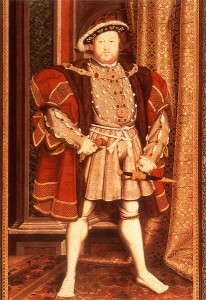
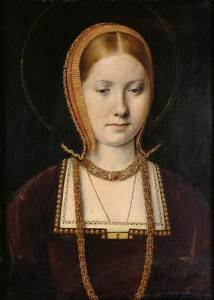
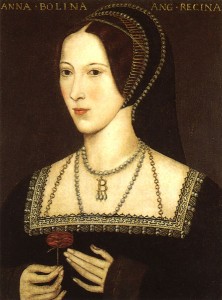
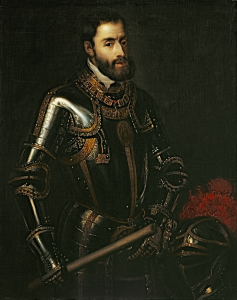
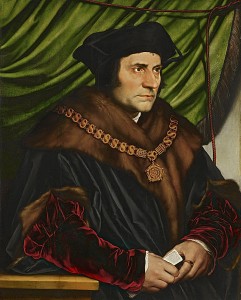


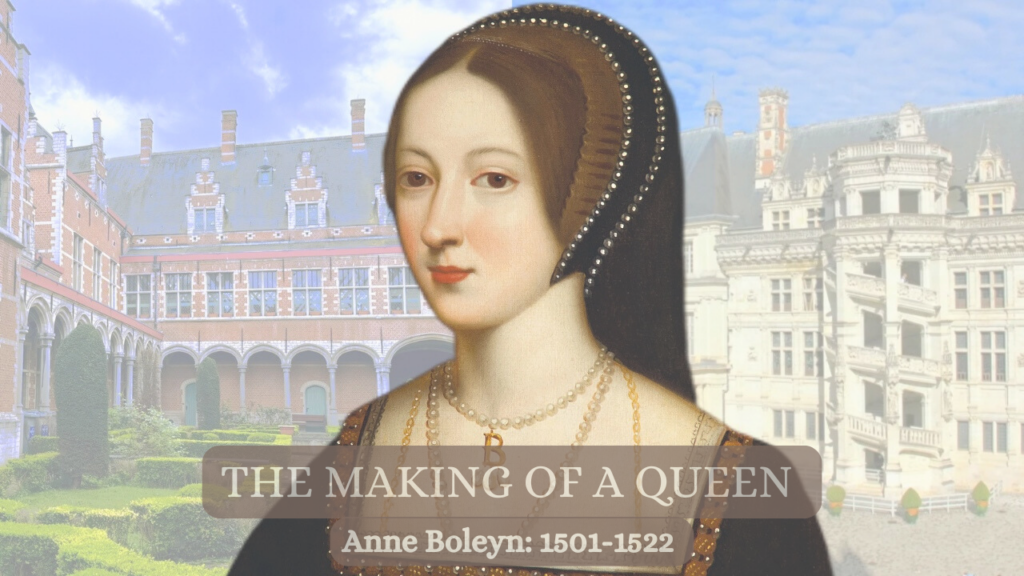














Excellent article. Isn’t there a misprint at the end : “Henry continues to rule England until his death in 1509” ? Henry VIII (28 June 1491 – 28 January 1547) was King of England from 21 April 1509 until his death.
Thanks for picking that up Elizabeth! All fixed 🙂
Nice article–congrats!
Great article. One other point — one reason for the theological debate over the validity of the marriage was conflicting verses. While Leviticus 20:21 forbids marriage with a brother’s wife, Deuteronomy 25:5 commands men to marry the widows of their brothers … but only when the brother had no children (which fits Catherine’s marriage to Arthur). It was also uncertain which of these commands applied to Christians, and, which only applied to Jews.
Nicely done, Lynn. An enjoyable read!
I enjoyed reading that….I think Clement VII grants the dispensation regarding Mary Boleyn and the pre-contract created by her intercourse with the king before her sister Anne….
Helped with my Homework 🙂
Henry annulled his marriages to Catherine of Aragon and Anne of Cleves. Jane Seymour died from complications during delivery. Anne Boleyn and Katherine Howard were executed. Katherine Parr outlived Henry. Who was the third annulment you mention in your article?
I believe Henry had his marriages to Katherine Howard and Anne Boleyn annulled before he had them executed.